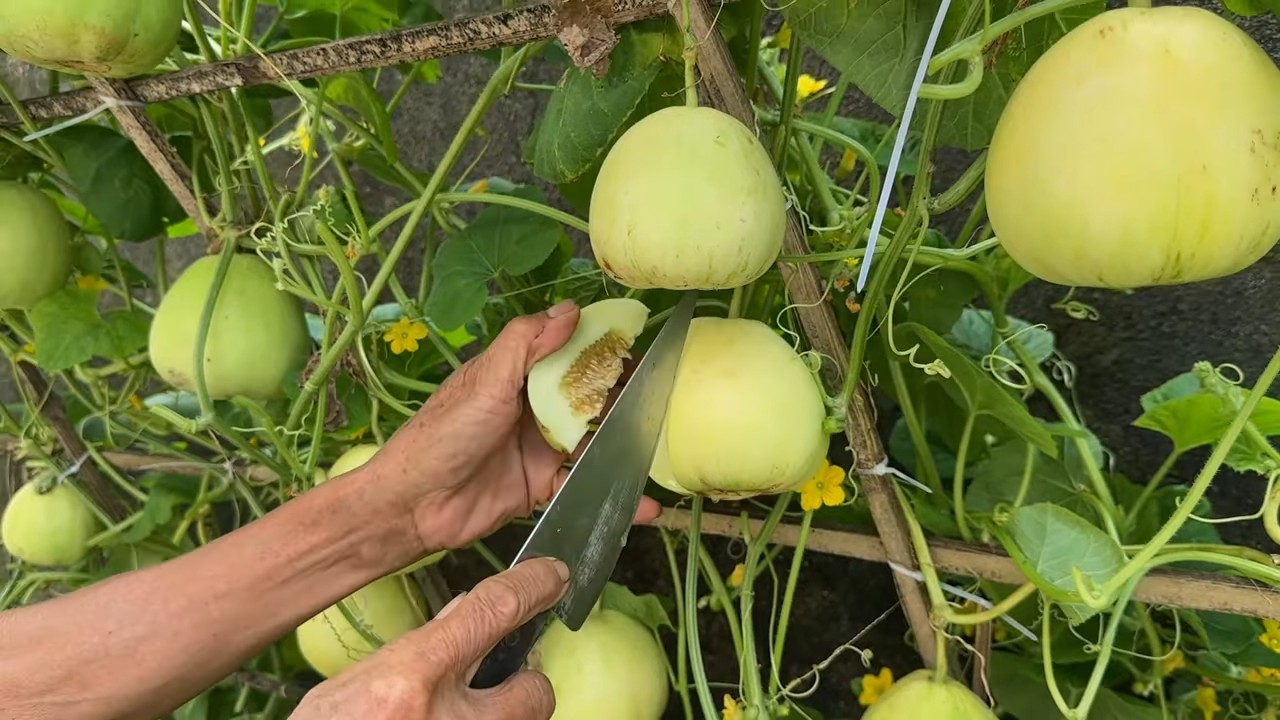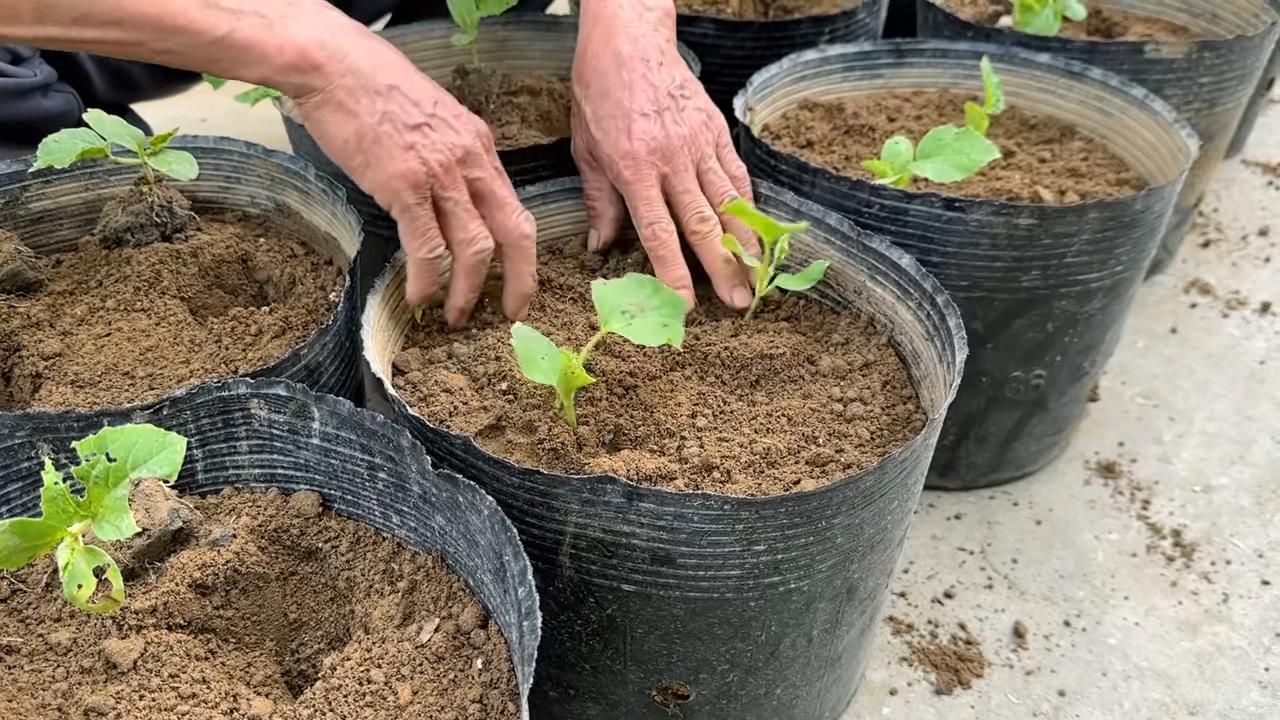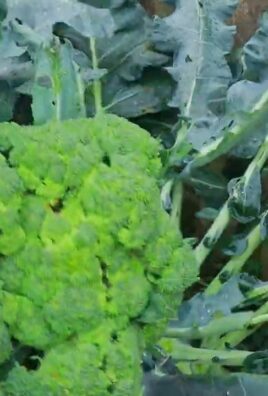Growing Unique Melons might sound like something only professional farmers can achieve, but trust me, with a little know-how and some DIY spirit, you can cultivate these delicious and unusual fruits right in your own backyard! Forget the same old supermarket watermelon; we’re talking about honeydew kissed with lavender, cantaloupes bursting with unexpected spice, and maybe even a canary melon that looks like sunshine itself.
For centuries, melons have been cherished across cultures, from ancient Egypt where they were buried with pharaohs, to the vibrant markets of Asia where they symbolize prosperity and good fortune. But you don’t need royal blood or a passport to enjoy these treasures.
Why should you embark on this melon-growing adventure? Well, for starters, imagine the bragging rights! But more importantly, growing unique melons allows you to control the quality and freshness of your food. You’ll avoid harmful pesticides and enjoy flavors that are simply unmatched by store-bought varieties. Plus, it’s incredibly rewarding to nurture a tiny seed into a juicy, flavorful fruit. This article is packed with easy-to-follow DIY tricks and hacks that will help you succeed, even if you’re a complete beginner. So, grab your gardening gloves, and let’s get ready to grow some melon magic!

Growing Unique Melons Yourself: A Step-by-Step Guide
Hello dear garden friends! Do you want to enrich your garden with something truly special? Then let’s dive into the fascinating world of melon cultivation together! I will show you how you can successfully grow not only the classic honeydew or watermelons, but also more unusual varieties. Believe me, the taste of a homegrown, unique melon is incomparable!
Choosing the right melon variety
Before we get started, choosing the right melon variety is crucial. There are countless variations that differ in taste, size, color, and growing conditions. Here are a few of my favorites that I can recommend to you:
- Charentais melon: This French melon is known for its aromatic, orange flesh and intense fragrance. It is a bit more demanding, but the taste rewards the effort.
- Cantaloupe melon: A classic choice with sweet, orange flesh and a web-like rind. It is relatively easy to grow and reliably produces good yields.
- Watermelon ‘Blacktail Mountain’: An early variety that also thrives in cooler regions. It has a dark, almost black rind and red, juicy flesh.
- ’Lemon Drop’ melon: A small, yellow melon with a refreshing, lemon-like taste. Perfect for a small garden or for growing in a pot.
- ’Galia’ melon: A cross between a cantaloupe and a honeydew melon with greenish-white flesh and a sweet, aromatic taste. It is very robust and resistant to diseases.
Tip: Before buying, find out about the specific growing conditions of the respective variety. Pay attention to the ripening time, the size of the plant, and the required warmth.
The preparation: The key to success
Melons are sun worshipers and need a warm, sunny location with well-drained soil. Good soil preparation is therefore essential.
- Prepare the soil: It is best to start preparing the soil in autumn or spring. Loosen the soil thoroughly and remove weeds and stones.
- Incorporate compost: Melons are heavy feeders and need a lot of nutrients. Work plenty of compost or well-rotted manure into the soil. This improves the soil structure and provides the plants with important nutrients.
- Test the soil: A soil test can provide information about the pH and nutrient content of the soil. Melons prefer a slightly acidic to neutral pH (6.0-7.0). If necessary, you can improve the soil with lime or other additives.
- Create beds: Create flat raised beds. This improves drainage and warms the soil faster.
Sowing and growing
Melons can either be sown directly outdoors or started indoors. I recommend starting them indoors, as the plants will have a growth advantage and will be less susceptible to pests and diseases.
- Sowing time: Start growing indoors about 4-6 weeks before the last expected frost.
- Sowing containers: Use small pots or seed trays with seed starting mix.
- Sowing: Place the seeds about 1-2 cm deep in the soil and cover them lightly with soil.
- Watering: Water the soil carefully and keep it moist, but not wet.
- Location: Place the seed trays in a warm, bright place. A temperature of 20-25°C is ideal for germination.
- Germination: Germination usually takes 7-14 days.
- Pricking out: As soon as the seedlings have developed their first true leaves, you can prick them out into larger pots.
- Hardening off: Before you plant the plants outdoors, you should slowly acclimate them to the outdoor conditions. Place them outdoors for a few hours during the day and bring them back in at night.
Planting out
As soon as there is no more danger of frost and the soil has warmed up sufficiently, the melon plants can be planted outdoors.
- Timing: Plant the melons only when the soil temperature is at least 15°C.
- Planting distance: Maintain a planting distance of 80-100 cm between the plants and 150-200 cm between the rows.
- Planting hole: Dig a sufficiently large planting hole and place the plants in it carefully.
- Watering in: Water the plants thoroughly after planting.
- Mulching: Mulch the soil around the plants with straw or mulch film. This keeps the soil moist, suppresses weeds, and warms the soil.
Care during the growth phase
Melons require regular care during the growth phase to thrive optimally.
- Watering: Water the plants regularly, especially during dry periods. Avoid wetting the leaves to prevent fungal diseases.
- Fertilizing: Fertilize the plants every 2-3 weeks with an organic fertilizer or a special melon fertilizer.
- Weeding: Keep the soil around the plants free of weeds.
- Trellis: Some melon varieties, especially smaller ones, can be grown on trellises. This saves space and improves ventilation.
- Pruning: Remove side shoots to promote the formation of fruits. Let 2-3 fruits ripen per plant.
- Fruit support: Place straw or wooden boards under the ripening fruits to prevent rot.
Protection from pests and diseases
Melons can be infested by various pests and diseases. Here are some of the most common problems and how you can combat them:
- Aphids: Aphids suck plant sap and can transmit viruses. Combat them with a jet of water, soapy water, or beneficial insects like ladybugs.
- Powdery mildew: Powdery mildew is a fungal disease that is characterized by a white, powdery coating on the leaves. Combat it with fungicides or home remedies like a milk-water mixture.
- Downy mildew: Downy mildew is another fungal disease that is characterized by yellowish spots on the leaves. Combat it with fungicides or home remedies like garlic tea.
- Snails: Snails can eat young melon plants bare. Protect the plants with snail fences or snail bait.
- Cucumber mosaic virus: Cucumber mosaic virus is a viral disease that is characterized by mosaic-like patterns on the leaves. There is no direct control, infested plants should be removed.
Tip: Ensure good ventilation of the plants and avoid waterlogging to prevent fungal diseases.
Harvest time and storage
The harvest time is crucial for the taste of the melons.
Harvest: Carefully cut the melon from the stem.
Signs of ripeness: Pay attention to the following signs of ripeness:
The rind changes color and becomes duller.
The stem attachment dries up.
The melon sounds hollow when you tap it.
The fruit detaches easily from the stem.

Conclusion
So, there you have it! Growing unique melons isn’t just a gardening project; it’s an adventure in flavor, a testament to your green thumb, and a conversation starter all rolled into one. We’ve explored the fascinating world of heirloom varieties, the secrets to successful pollination, and the joy of harvesting your own sweet, juicy treasures.
Why is this DIY trick a must-try? Because it elevates your gardening game from mundane to magnificent. Imagine the look on your friends’ faces when you present them with a slice of fragrant, vibrant Crenshaw melon, or the satisfaction of knowing you nurtured a delicate, exotic Charentais from seed to table. It’s about more than just food; it’s about connecting with nature, preserving biodiversity, and experiencing the pure delight of homegrown goodness.
But the journey doesn’t end here. Feel free to experiment with different melon varieties based on your climate and taste preferences. Consider companion planting to deter pests and attract pollinators. Try vertical gardening techniques to maximize space in smaller gardens. You could even explore grafting techniques to combine the best traits of different melon types. The possibilities are endless!
Don’t be afraid to get your hands dirty and embrace the challenges that come with growing these unique beauties. Remember to document your progress, take lots of pictures, and most importantly, have fun!
We are confident that with a little patience, dedication, and the knowledge you’ve gained here, you’ll be enjoying a bountiful harvest of delicious, unique melons in no time. We encourage you to embark on this rewarding journey and discover the magic of homegrown melons.
Now, we want to hear from you! Have you tried growing unique melons before? What are your favorite varieties? What challenges did you face, and how did you overcome them? Share your experiences, tips, and photos in the comments below. Let’s create a community of melon enthusiasts and inspire each other to cultivate a world of flavor, one melon at a time. Your insights could be invaluable to other aspiring gardeners. So, get growing, get sharing, and get ready to savor the sweet taste of success!
Frequently Asked Questions (FAQ)
What are the easiest unique melon varieties to start with for beginners?
For beginners venturing into the world of unique melons, several varieties offer a higher chance of success due to their relative ease of cultivation. Consider starting with:
* **Cantaloupe:** While not strictly “unique,” heirloom cantaloupes like ‘Jenny Lind’ or ‘Hales Best Jumbo’ offer superior flavor compared to modern hybrids and are relatively forgiving. They are also widely available as seeds or seedlings.
* **Honey Dew:** Similar to cantaloupe in terms of growing requirements, honeydew melons are another good option for beginners. Look for heirloom varieties for enhanced flavor.
* **Watermelon (smaller varieties):** Opt for smaller watermelon varieties like ‘Sugar Baby’ or ‘Golden Midget.’ These mature faster and require less space than larger types, making them ideal for smaller gardens or containers.
* **Galia Melon:** This melon is a hybrid of cantaloupe and honeydew, offering a sweet and aromatic flavor. It’s known for its disease resistance and adaptability, making it a good choice for novice gardeners.
These varieties are generally more tolerant of common gardening mistakes and offer a good introduction to the specific needs of melon cultivation.
How do I know when my unique melons are ripe and ready to harvest?
Determining ripeness is crucial for enjoying the best flavor and texture of your unique melons. Here are some general guidelines, but remember that specific indicators may vary slightly depending on the variety:
* **Aroma:** Ripe melons often emit a sweet, fragrant aroma, especially near the stem end.
* **Color Change:** The skin color of many melons will change as they ripen. For example, green melons may turn yellowish or orange. Consult specific variety information for expected color changes.
* **Stem Slip:** For some melons, like cantaloupe, the stem will begin to separate easily from the fruit when ripe. This is known as “full slip.”
* **Thumping Test:** Gently thump the melon. A ripe melon will often sound hollow or deep.
* **Ground Spot:** The spot where the melon rests on the ground (the “ground spot”) will often turn from white to yellow or cream-colored when ripe.
* **Tendril Check:** For some varieties, the tendril closest to the melon stem will turn brown and dry when the melon is ready.
It’s best to use a combination of these indicators to determine ripeness. If you’re unsure, it’s better to err on the side of caution and wait a day or two longer.
What are some common pests and diseases that affect unique melons, and how can I prevent or control them?
Melons can be susceptible to various pests and diseases. Here are some common issues and strategies for prevention and control:
* **Squash Bugs and Vine Borers:** These pests can damage vines and fruits. Prevention includes using row covers early in the season, handpicking bugs, and removing infested vines.
* **Aphids:** These small insects suck sap from leaves, weakening the plant. Control options include spraying with insecticidal soap or neem oil, and introducing beneficial insects like ladybugs.
* **Cucumber Beetles:** These beetles can transmit diseases and damage foliage. Use row covers, handpick beetles, and consider using organic insecticides.
* **Powdery Mildew:** This fungal disease causes a white, powdery coating on leaves. Improve air circulation, avoid overhead watering, and use fungicides if necessary.
* **Fusarium Wilt:** This soilborne disease can cause wilting and death of plants. Use disease-resistant varieties, practice crop rotation, and improve soil drainage.
**General Prevention Tips:**
* **Choose disease-resistant varieties.**
* **Practice crop rotation.**
* **Maintain good soil drainage.**
* **Provide adequate spacing between plants for good air circulation.**
* **Water at the base of the plants to avoid wetting the foliage.**
* **Monitor plants regularly for signs of pests or diseases.**
* **Remove and destroy infected plant material promptly.**
Can I grow unique melons in containers?
Yes, you can grow unique melons in containers, but it requires careful planning and attention. Choose smaller melon varieties that are well-suited for container gardening, such as ‘Sugar Baby’ watermelon or smaller cantaloupe types. Use large containers (at least 20 gallons) with good drainage. Provide a sturdy trellis or support system for the vines to climb. Use a high-quality potting mix and fertilize regularly. Ensure the plants receive at least 6-8 hours of sunlight per day. Water frequently, especially during hot weather.
How can I improve pollination for my unique melons?
Melons require pollination to produce fruit. Here are some tips to improve pollination:
* **Attract Pollinators:** Plant flowers that attract bees and other pollinators near your melon plants.
* **Hand Pollination:** If you’re having trouble with natural pollination, you can hand-pollinate the flowers. Use a small brush to transfer pollen from the male flowers to the female flowers.
* **Provide Water:** Ensure pollinators have access to a source of water, such as a shallow dish with pebbles.
* **Avoid Pesticides:** Avoid using pesticides that can harm pollinators.
* **Morning Pollination:** Pollinate in the morning, as this is when the pollen is most viable.
* **Understand Flower Types:** Melons have separate male and female flowers on the same plant. Female flowers have a small swelling at the base (the developing fruit), while male flowers do not.
What is the best soil for growing unique melons?
Melons thrive in well-drained, fertile soil with a slightly acidic to neutral pH (6.0-7.0). Amend your soil with compost or other organic matter to improve drainage and fertility. Avoid heavy clay soils, as they can retain too much water and lead to root rot. If you have clay soil, consider growing melons in raised beds or containers. A soil test can help you determine the pH and nutrient levels of your soil and guide you in making necessary amendments.
How often should I water my unique melon plants?
Water melon plants deeply and regularly, especially during hot, dry weather. Aim to keep the soil consistently moist but not waterlogged. Water at the base of the plants to avoid wetting the foliage, which can increase the risk of fungal diseases. The frequency of watering will depend on the weather, soil type, and the size of your plants. Check the soil moisture regularly and water when the top inch or two feels dry. Mulching around the plants can help retain moisture and reduce the need for frequent watering.





Leave a Comment